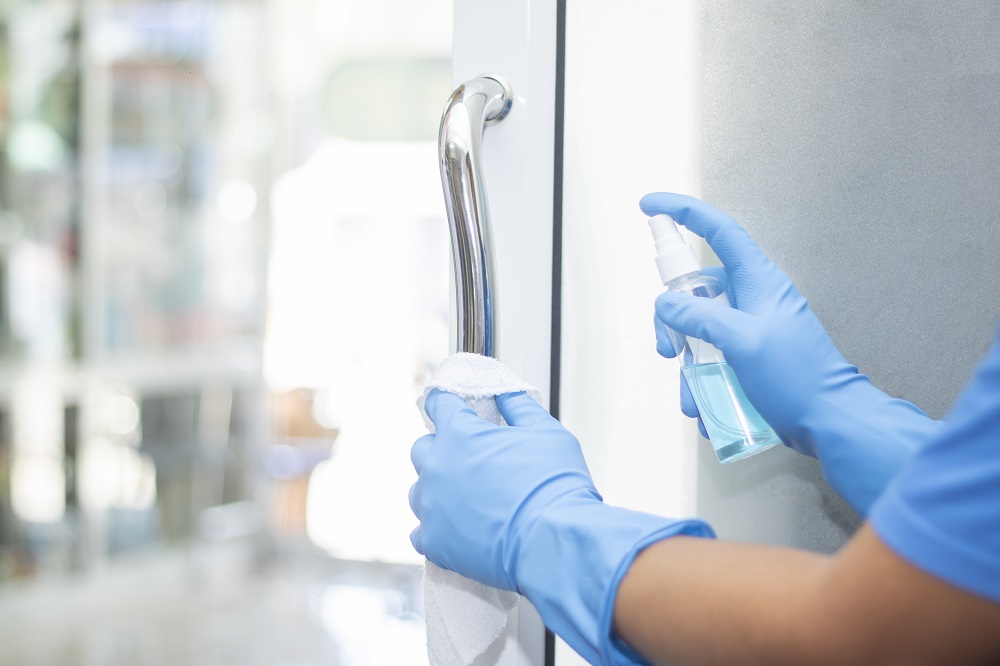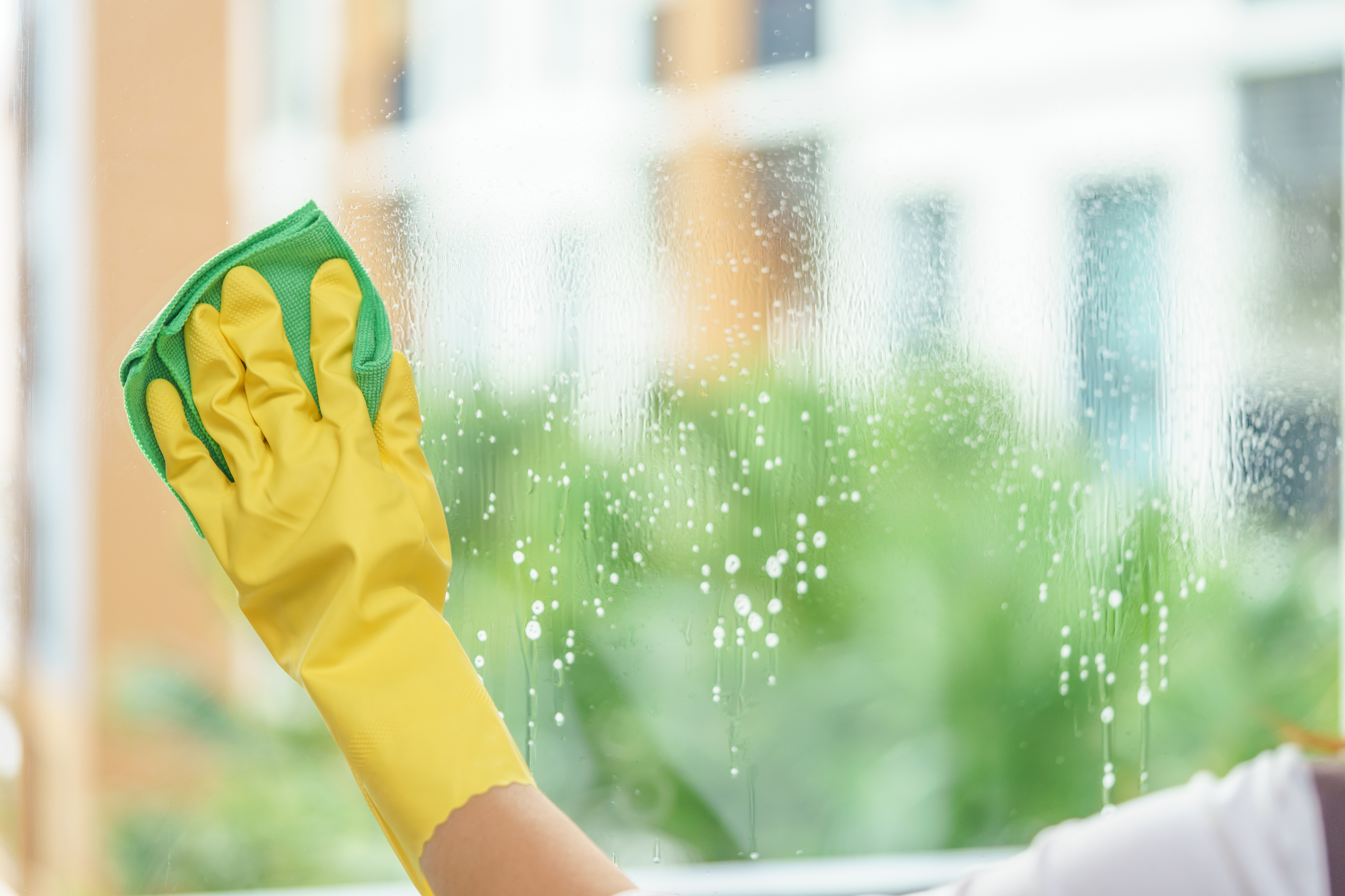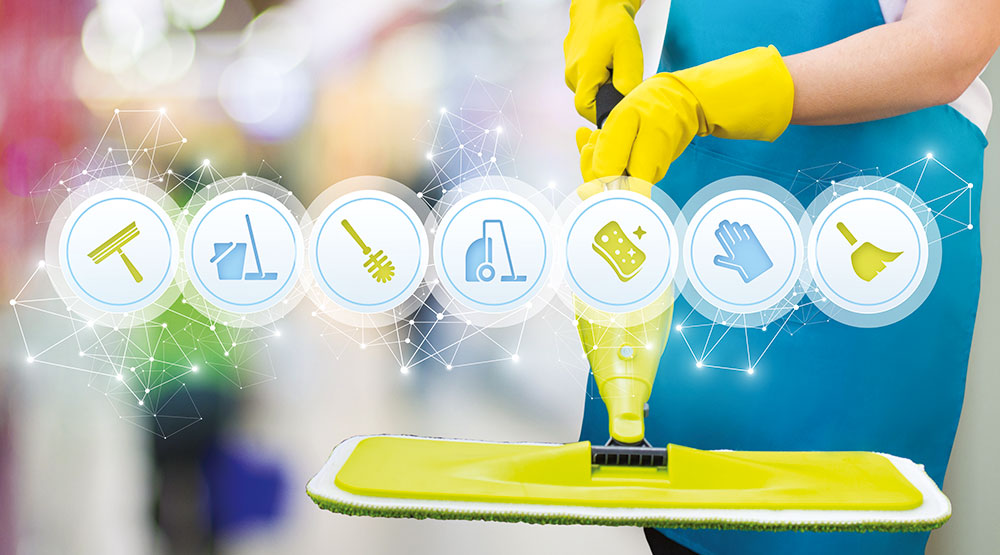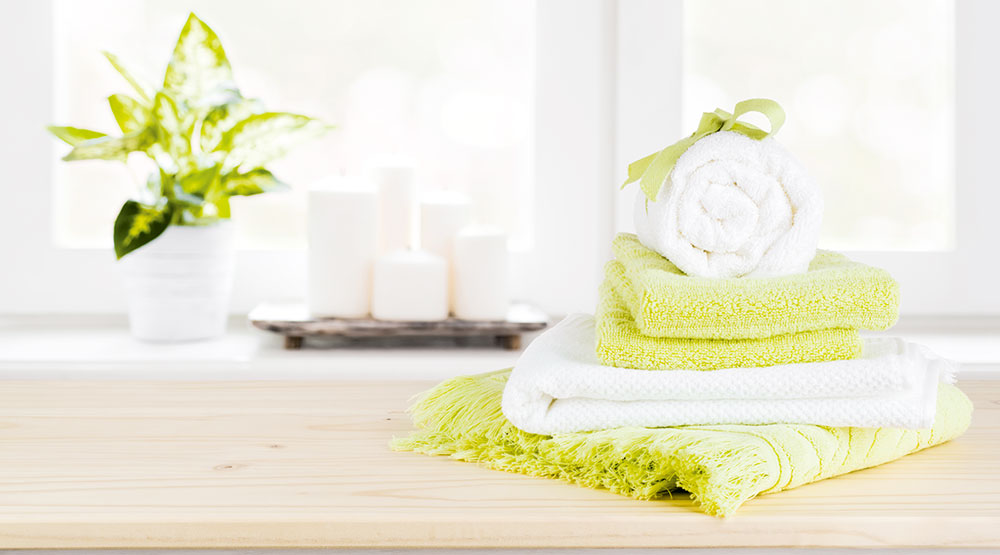
What does a ‘clean and healthy’ indoor environment mean to you? Yes, hygienically clean, and spotless surfaces are important, but healthy bodies need clean air as well as clean surfaces.
In part two of a five-part masterclass series on Cleaning Well, this article will explore how cleaning and disinfectant products, tools, and techniques, can either enhance or reduce indoor air quality (IAQ).
The importance of cleaning for good IAQ
Multiple studies have concluded that by improving IAQ, you can significantly improve the performance of workers and increase productivity by 4 to 10 per cent. Poor IAQ on the other hand, has been shown to affect individual wellbeing leading to increased rates of sick leave, breaks, mistakes, and risk of workplace accidents1.
The NABERS Indoor Environment Quality (IEQ) Rating and the WELL Building Standard have testing protocols for indoor air quality. A building’s cleaning protocols can significantly affect its air quality via:
- Dust and mould particles being removed from the building, and
- Cleaning and disinfectant products being brought into the building.
This article will explain the risks associated with dust and chemical contaminants and how to improve IAQ by cleaning well.
How dust can affect air quality
As every cleaner knows, the air is full of dust particles that continuously build-up on surfaces. But not many cleaners realise that indoor dust is potentially harmful.
While the most common source of dust is the natural erosion of soil, sand and rock, it can also contain pollen, microscopic organisms such as mould spores, fungus and viruses, plant material, dust mite droppings and dander (dead skin cells)2.
Particles of man-made building and furnishing materials are also commonly found in indoor dust, plus particles of tyres, concrete, herbicides and diesel fuel that are blown or walked into the building.
Many dust particles are invisible to the naked eye (which can see dust at 25 microns). Inhaling sufficient volumes of fine dust may trigger coughing, allergies or asthma. Dust that is .3 microns in size or smaller may penetrate deeply into the lungs where it can be absorbed directly into the blood stream or lead to respiratory disease.
Protect occupants and cleaners from dust
Here are three ways to remove dust effectively and safely:
- Damp dust: ‘Feather’ dusters and soiled dusting wipes simply move dust from one surface to another. With the added risk of coronavirus being shed onto surfaces from asymptomatic people, the resuspension of virus particles in dust must be avoided. All surfaces should be damp wiped with a folded cloth, frequently turned to a fresh side, and rinsed out or replaced when soiled. Fully damp wiping on a weekly, fortnightly or even monthly basis, can significantly reduce overall dust levels, save time in the long run and improve IAQ.
- HEPA filters in vacuum cleaners: Vacuum cleaners fitted with HEPA filters must trap at least 99.97 per cent of particles with a minimum size of 0.3 microns. Without HEPA filters, it is estimated that vacuum cleaners only retain 96 per cent of particles, meaning 4 per cent of the finest dust particles are blown back into the air.
- Empty vacuum dust bags: Prevent cleaner’s exposure to dust while emptying vacuum dust bags with the use of disposable liners, dust masks, and emptying inside a bin-liner.
How hazardous chemicals can affect air quality
Disinfectants as an air contaminant
Images of cleaners fogging disinfects while wearing hazmat coveralls and respirators, have featured prominently in media stories covering the COVID-19 pandemic: the cleaning industry fighting an invisible army.
But the reality is that many cleaners won’t have access to that level of protection, and neither will the people who use the buildings being disinfected. Respiratory health risks can be equally as serious and must be considered on balance.
Our respiratory tract is the gateway to our body’s system. When a chemical mist, fume or gas is inhaled, it can be deposited in the airways or absorbed via the lungs into the blood stream where it is carried around the body.
Multiple studies conducted on healthcare and cleaning workers have found risks of mucous membrane irritation, respiratory disease and work-related asthma 18Fassociated with the high use of disinfectant products, plus elevated rates of chronic bronchitis 3,4,5.
This risk is significantly increased when misting or fogging disinfectants within enclosed and poorly ventilated spaces, such as public transport or washrooms6. Depending on the airflow and disinfectant used, it may also expose sensitive occupants to hazardous chemicals.
On 19 May 2020, Safe Work Australia advised that due to safety risks, disinfectant fogging is not recommended for general use against COVID-19 and should not be undertaken as a response to, or element of a response to contamination of an area with COVID-197.
VOCs as an air contaminant
Volatile organic compounds (VOCs) are a group of substances that easily evaporate at room temperature to create indoor smog. VOCs can be up to 10 times higher inside buildings than outdoors8 and depending on the type, have been linked to many health problems including: respiratory irritation; sensitisation; headaches; drowsiness; and confusion; to more serious neurological and central nervous system damage.
Many cleaning and disinfectant products are a source of VOCs: solvent-based degreasers; stain and graffiti removers; polish; air-fresheners; scented products; phenol, ethanol and QUATs disinfectants.
VOCs can be in ‘natural’ ingredients such as citrus peel oil (limonene), Pine or Eucalyptus oil (terpenes), or in benzene and other crude oil derivatives which are often toxic. IAQ testing measures the building’s Total Volatile Organic Compound emissions, regardless of the source.
Protect occupants and cleaners from hazardous chemicals
HPC Solutions helps service providers identify risks to the health and wellbeing of occupants and cleaners, then use a risk hierarchy of elimination, control and prevention to make decisions. Below are some examples of this risk hierarchy planning to improve IAQ.
Eliminate the risk:
- Chemical-free: Consider where mechanical cleaning tools and tap water, or technologies that convert tap water into cleaning agents can be used.
- VOC free chemicals: Replace solvent or alcohol-based surface cleaners with VOC-free products. (Check with the manufacturer as this data may not be readily available)
- Fragrance-free: Fragrances, by their nature, contain VOCs.
Control the risk:
- Reduction: Chemicals certified by eco-labels have restricted levels of VOCs, for example: GECA restricts the total amount of VOCs to 3.0 per cent by weight once diluted; recognised sets a range of restrictions according to product type, from 5 per cent to 12 per cent.
- Application: Aerosols and sprays generate fine droplets that can be readily inhaled and remain suspended in the air. Spray chemicals onto a damp cloth not the surface, with a jet rather than a mist.
- Ventilation: Turn on extraction fans, wedge doors open and open windows when working in small spaces. If using fogging equipment, isolate the air conditioner from the fogged area and switch it to external air. Exposure limits: Avoid using two different VOCs in the same area at the same time, or it could cause additive or synergistic health effects, and follow the SWA’s exposure limits for each chemical used.
Protect against the risk:
- PPE: P2 respirator masks will stop fine mists and some fumes. If the VOCs are strong or working in a confined space for an extended time, add a charcoal filter.
Cleaning well means leaving the air as clean the surfaces.
Bridget Gardner is director of High-Performance Cleaning Solutions.Find out more about HPC Solutions™ programs at www.hpcsolutions.com.au or get in touch at: solutions@hpcsolutions.com.au
This article first appeared in the July/August issue of INCLEAN magazine
References
[1] Creating the Productive Workplace Ed.2, by D. Clements-Croome.
2 Health effects of dust, Department of Health WA. Source: www.healthywa.wa.gov.au/Articles/F_I/Health-effects-of-dust.
3 Health problems and disinfectant product exposure among staff at a large multispecialty hospital; M.L. Casey; et al American Journal of Infection Control, 2017. Source: www.ajicjournal.org/article/S0196-6553(17)30295-X/fulltext
4 Quantitative assessment of airborne exposures generated during common cleaning tasks: a pilot study. Bello et al. Environmental Health 2010, pp.9:76. Source: www.ehjournal.net/content/9/1/76.
5 Occupational health risks associated with use of environmental surface disinfectants in health care, (letter), American Journal of Infection Control, 2016. Source: www.ajicjournal.org/article/S0196-6553(16)30867-7/pdf
6 Australia State of the Environment. Source: https://soe.environment.gov.au/theme/ambient-air-quality/topic/2016/volatile-organic-compounds
7 Airborne exposures to monoethanolamine, glycol ethers, and benzyl alcohol during professional cleaning: a pilot study. Gerster et al. The Annals of Occupational Hygiene, 2014 Aug; 58 (7): pp. 846-59. Source: https://doi.org/10.1093/annhyg/meu028.
8 Office Cleaning, Safe Work Australia. Source: www.safeworkaustralia.gov.au/covid-19-information-workplaces/industry-information/office/cleaning?tab=tab-toc-employer
9 Safe Work Australia. Workplace Exposure Standards for Airborne Contaminants. Source: www.safeworkaustralia.gov.au/doc/workplace-exposure-standards-airborne-contaminants
Comment below to have your say on this story.
If you have a news story or tip-off, get in touch at info@3.106.117.80.
Sign up to INCLEAN’s newsletter.






Useful and timely information. So much to learn and remind ourselves of the risks lurking around us and measures to take to protect our team as well as occupants in buildings.